Today we are very excited to share an interview with author Melissa Stewart (Tree Hole Homes: Daytime Dens and Nighttime Nooks)!
Read on to learn more about her, her book, and a giveaway!
Meet the Author: Melissa Stewart
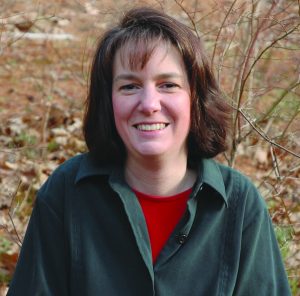
Melissa Stewart has written more than 180 science books for children, including the ALA Notable Children’s Book Feathers: Not Just for Flying and the SCBWI Golden Kite Honor title Pipsqueaks, Slowpokes, and Stinkers: Celebrating Animal Underdogs. She co-authored 5 Kinds of Nonfiction: Enriching Reading and Writing Instruction with Children’s Books and edited the anthology Nonfiction Writers Dig Deep: 50 Award-Winning Authors Reveal the Secret of Engaging Writing. Melissa maintains the award-winning blog Celebrate Science and serves on the Society of Children’s Book Writers and Illustrators board of advisors.
Website * Twitter * Facebook * Pinterest
About the Book: Tree Hole Homes: Daytime Dens and Nighttime Nooks
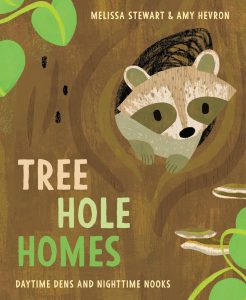
In this nature-themed picture book, nonfiction expert Melissa Stewart and illustrator Amy Hevron offer an inviting peek into tree holes and the amazing animals that inhabit them.
Imagine this: one day you’re walking through the woods and spot a tree hole large enough to slip inside. So you do. And you wonder, what kind of creature lived here?
In this science and nature-themed picture book, nonfiction expert Melissa Stewart and illustrator Amy Hevron offer up an inviting peek into the secret world of tree hole dwellers.
From black bears to tree frogs and bobcats, it’s surprising just who you’ll find! A main text gives general information about tree holes (“a treehole can be a daytime den”) and a secondary text provides more detail. This inviting look at trees, tree holes, and fascinating animals is sure to be a classroom and kid favorite.
~Author Chat~
YABC: What gave you the inspiration to write this book?
The idea for Tree Hole Homes traces all the way back to the summer between third and fourth
grade, when I read My Side of the Mountain by Jean Craighead George. Oh, how I longed to live
off the land and make a hollow tree my home, just like the main character, Sam.

Time passed, and I forgot about the book until a trip to Vancouver Island, British Columbia,
Canada, in 2011. The instant I spotted a tree with a hole big enough for me to squeeze inside,
Sam’s story came rushing back. And as I stood inside and looked up into the hollow tree, I knew
I’d write a book about tree hole homes.
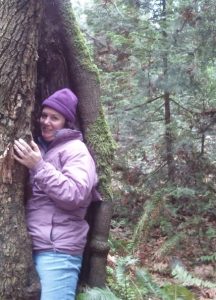
I created a file on my computer and added information from my nature journals. Whenever I read
or heard anything about tree holes or animals that live in them, I added more notes to the file.
Eventually, I knew I had enough information, but I didn’t know how to structure the book or
how it should begin or end. I was stuck.
But then in 2018, while hiking in Topsfield, Massachusetts, I stumbled upon another large tree
hole. As I awoke the next morning, the beginning of the book popped into my mind.

I ran to my office, and as I wrote it down, the ‘opposites’ text structure came to me. Using index
cards and sticky notes, I mapped out the book in just a few days. Then it was time to start
writing.
YABC: What do you like most about the cover of the book?
Everything! Illustrator Amy Hevron did an outstanding job with the art, and I just love the
typography the designers at Random House Studio came up with. Here’s the real-life inspiration
in Amy’s yard—the tree, the morning glory vine, and the racoons.

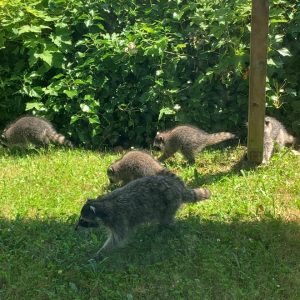
The subtitle “Daytime Dens and Nighttime Nooks” was a last-minute addition, and the credit
goes to Jeannie Bracken, a member of my critique group, for suggested it. These words are
pulled out of the book’s text.
YABC: When did you first realize you were drawn to the world of nonfiction, and what is
the appeal for you?
Many writers gravitate toward fiction because they love to invent characters and create made up
worlds, but for me, the real world is so amazing, so fascinating that I just want to learn as much
as I can about it and share it with other people. That’s why I write nonfiction.
YABC: We hear a lot about narrative nonfiction, such as picture book biographies, but you
tend to write expository nonfiction. What’s the difference, and why do you choose to use an
expository writing style?
Narrative nonfiction and expository nonfiction are both meticulously researched and fully
faithful to the facts, but they present ideas and information differently.
Like fiction, narrative nonfiction puts story first. It includes real characters and settings; narrative
scenes; and, ideally, a narrative arc with rising tension, a climax, and denouement. The scenes,
which give readers an intimate look at the events and people being described, are linked by
transitional text that provides necessary background while speeding through parts of the true
story that don’t require close inspection. The art of crafting narrative nonfiction lies in pacing,
which means selecting just the right scenes to flesh out.
Not all children are naturally drawn to stories and storytelling. Some are more interested in data, facts,
ideas, and patterns than in making an emotional connection with the central figure in a book. As they
read, their goal is to gather information so that they can learn about the world and how it works. These
children enjoy reading expository nonfiction—books that describe, explain, or inform in a clear,
accessible fashion.
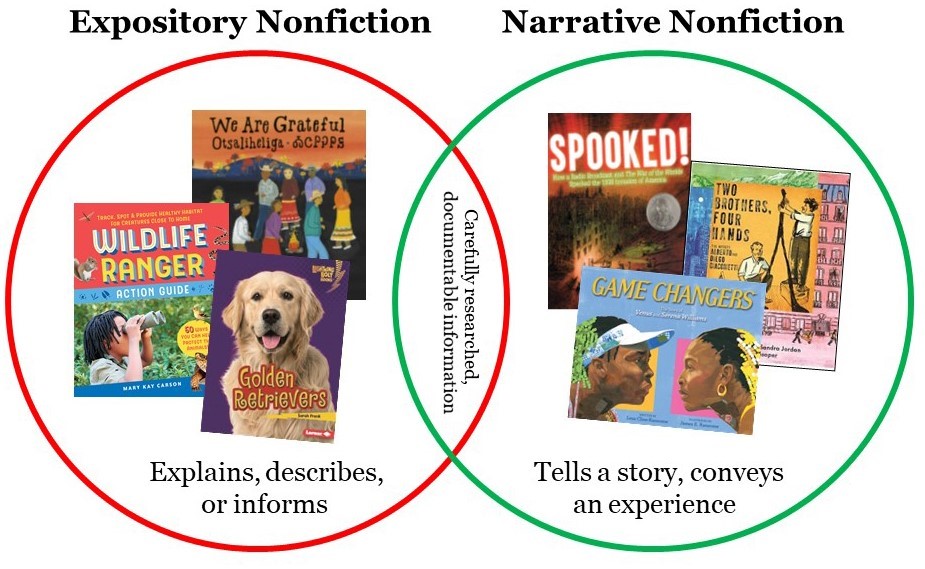
Expository nonfiction works especially well for books about STEM concepts because there is no
built-in storyline. This writing style can also work for some social studies topics, and I hope we
start to see more books written in this way because studies show that about 40 percent of
elementary-aged kids prefer expository writing and another 30 percent enjoy both writing styles
equally. You can learn more about the wide world of nonfiction in 5 Kinds of Nonfiction:
Enriching Reading and Writing Instruction with Children’s Books, which I co-write with literacy
professor Marlene Correia.
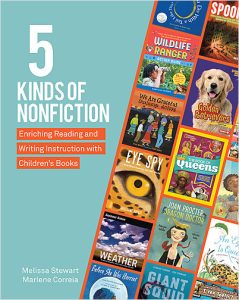
YABC: What’s a book you’ve recently read and loved?
Oh wow, I can’t narrow it down to just one. Here are a few 2022 nonfiction picture books I’m
excited about:
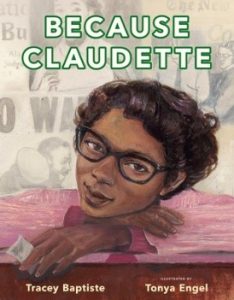
Because Claudette by Tracey Baptiste and Tonya Engel
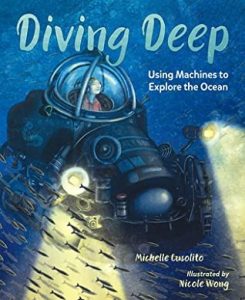
Diving Deep: Using Machines to Explore the Ocean by Michelle Cusolito and Nicole Wong
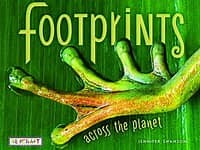
Footprints Across the Planet by Jennifer Swanson
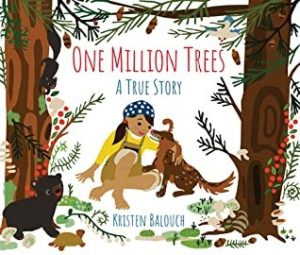
One Million Trees: A True Story by Kristen Balouch

Pizza! A Slice of History by Greg Pizzoli.
For middle grade, I’m a big fan of Secrets of the Lost City: A Scientific Adventure in the
Honduran Rain Forest by Sandra Markle.
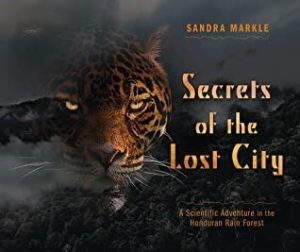
My favorite book of the year (so far) rides the MG/YA line—Seen and Unseen: What Dorothea
Lange, Toyo Miyatake, and Ansel Adam’s Photographs Reveal About the Japanese American
Incarceration by Elizabeth Partridge and Lauren Tamaki.
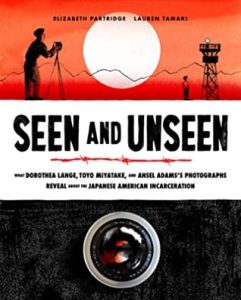
I hope this amazing book wins the Printz and the YALSA Nonfiction Award.
YABC: What’s up next for you?
I’m looking forward to the March 2023 publication of Whale Fall: Exploring an Ocean-floor
Ecosystem, illustrated by Rob Dunlavey. Here’s a sneak peek at the cover:

YABC: What advice do you have for new writers?
Enjoy the journey and celebrate successes—even the small ones!
So many things about book publishing are out of our control, and there are lots of challenges and
disappointments along the way. That’s why it’s important to make a big deal out of every single
bit of progress, from a “good” rejection to a starred review to winning a major award.
YABC: Is there anything that you would like to add?
Yes! Illustrator Amy Hevron and I collaborated on a fun little video as well as the book. Click
here and scroll down to “In the Illustrator’s Studio” to watch a video that shows how Amy
created the art for Tree Hole Homes using pieces of wood from all kinds of trees.
Here’s a Sample:
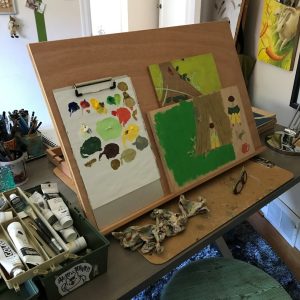

Title: TREE HOLE HOMES: DAYTIME DENS AND NIGHTTIME NOOKS
Author: Melissa Stewart
Illustrator: Amy Hevron
Release Date: 10/25/22
Publisher: Random House Studio
ISBN-10: 0593373308
ISBN-13: 9780593373309
Genre: nonfiction picture book
Age Range: 4-8
~ Giveaway Details ~
Five (5) winners will receive a copy of Tree Hole Homes: Daytime Dens and Nighttime Nooks (Melissa Stewart) ~US ONLY
*Click the Rafflecopter link below to enter the giveaway*

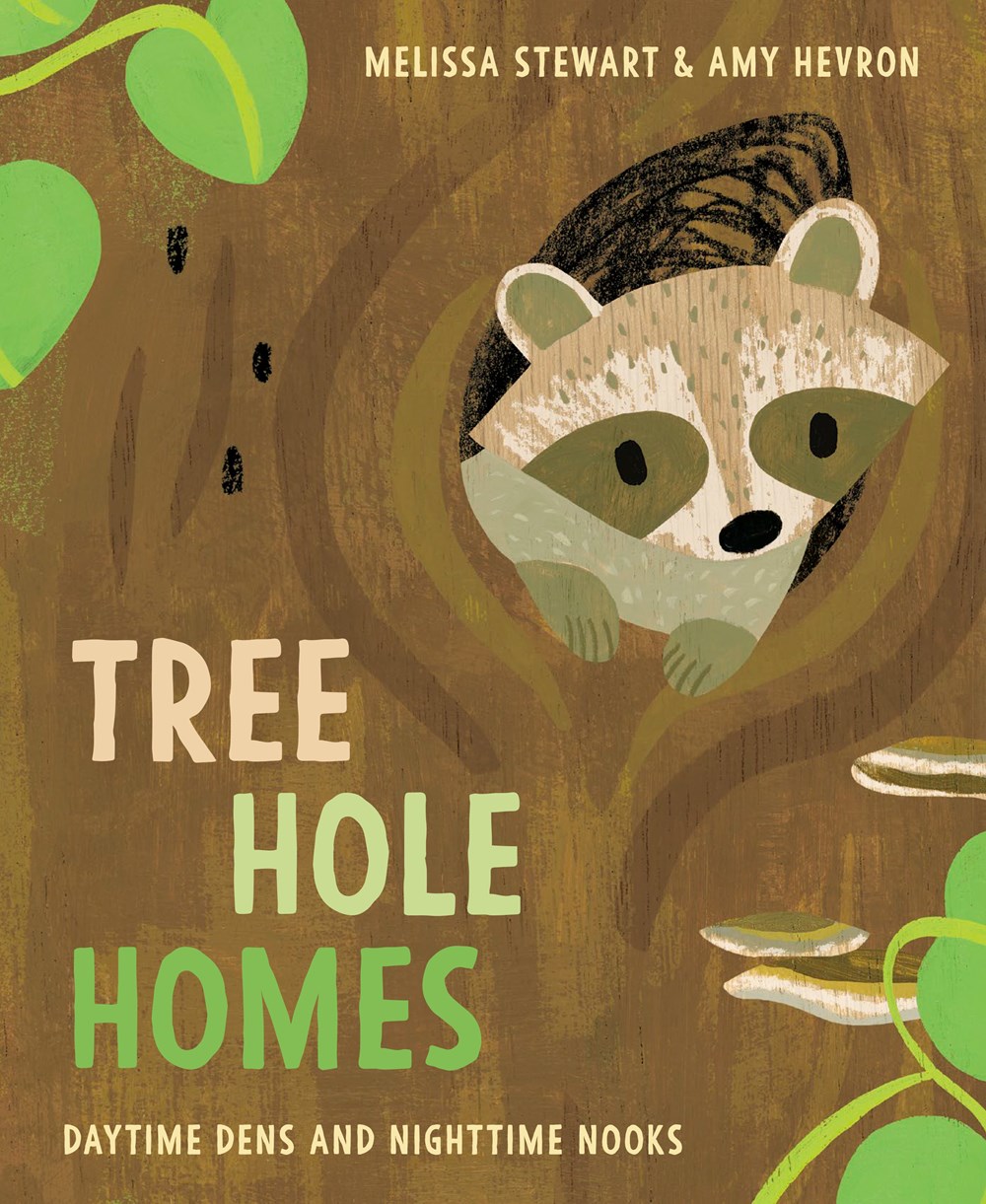

































So cute I absolutely love animals especially racoons
This looks great! I’d love to add it to my school’s nonfiction collection
I love this cute cover and can’t wait to read this book.
The cover is cute. I’m always interested in who lives in tree holes.